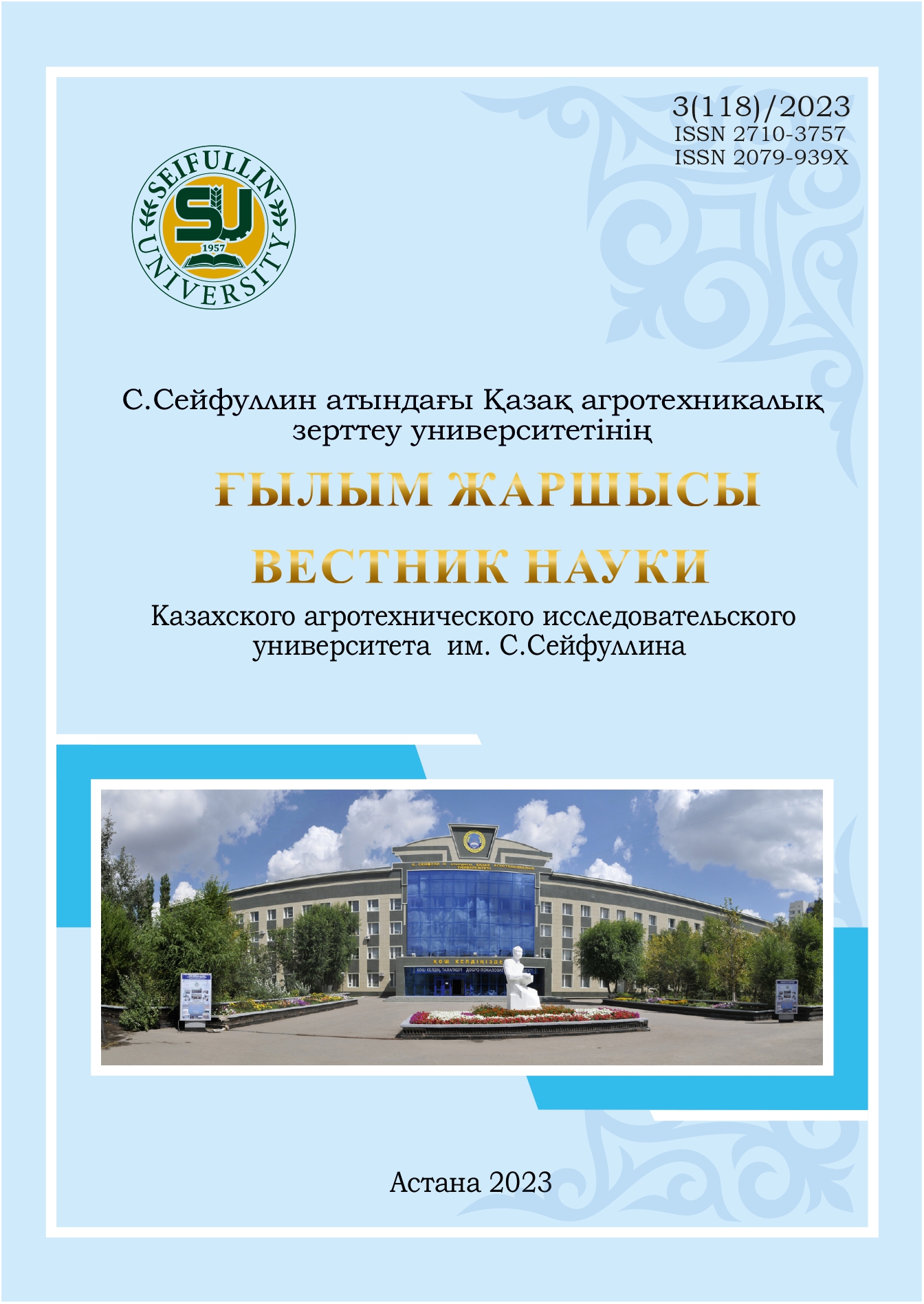EFFECT OF COLCHICINE ON THE STRUCTURAL PARAMETERS OF MILLET (Panicum miliaceum L.) PLANTS IN THE M1 GENERATION
DOI:
https://doi.org/10.51452/kazatu.2023.3(118).1447Keywords:
proso millet; Panicum miliaceum; chemical mutagenesis; colchicine; variability; elements of the crop structure; productivityAbstract
The present study was carried out to determine the mutagenic effect of colchicine on the indicators of the structural analysis of millet (Panicum miliaceum L.) plants in M1 breeds. Millet is a valuable food cereal and fodder crop in the world. Breeding work on the development of new varieties of millet in Kazakhstan is carried out mainly in the field of selective breeding: hybridization and individual selection. Increasing the genetic diversity of millet for breeding remains a rather urgent task, the solution of which can be ensured by the use of methods of chemically induced mutagenesis. Chemical induced mutagenesis is of great importance in plant breeding
programs due to random or selective changes in genetic material that may appear to be desired changes. Colchicine (C22H25NO6) is a common mutant-sensing chemical that regulates important agronomic traits. The seeds treated with various concentrations (0.00%, 0.04%, 0.06%, 0.08% and 0.1%) of an aqueous solution of colchicine for 6, 12 and 24 hours. The experiment was set up using a plot area of 2 m2, the location of the plots was systematic, accounting plots (0.5 m2) were repeated twice. Observation of the growth parameters of millet plants of the M1 generation showed that an increase in the concentration and time of treatment with a mutagen led to a significant inhibition of field germination and plant survival. The mutagen had no significant effect on morphometric parameters, such as plant height and panicle length. All variants treated with colchicine remained at the same level as the control. However, the influence of colchicine was noted on such basic elements of the yield structure as the weight of 1000 seeds, the weight of seeds per panicle and productive tillering. After analyzing the structural parameters of millet, variants were identified that were superior to the control in terms of yield of varieties with a 6-hour treatment with a concentration of 0.06%, with a 12-hour treatment with a concentration of 0.06% and 0.1%, with a 24-hour treatment with a concentration of 0.08%. The effectiveness of the use of colchicine as a mutagenic factor in the creation of a new source material for millet breeding has been established. Therefore, a colchicine-induced mutation can be effective in creating genetic variability and producing desired traits in millet without compromising its agronomic performance

